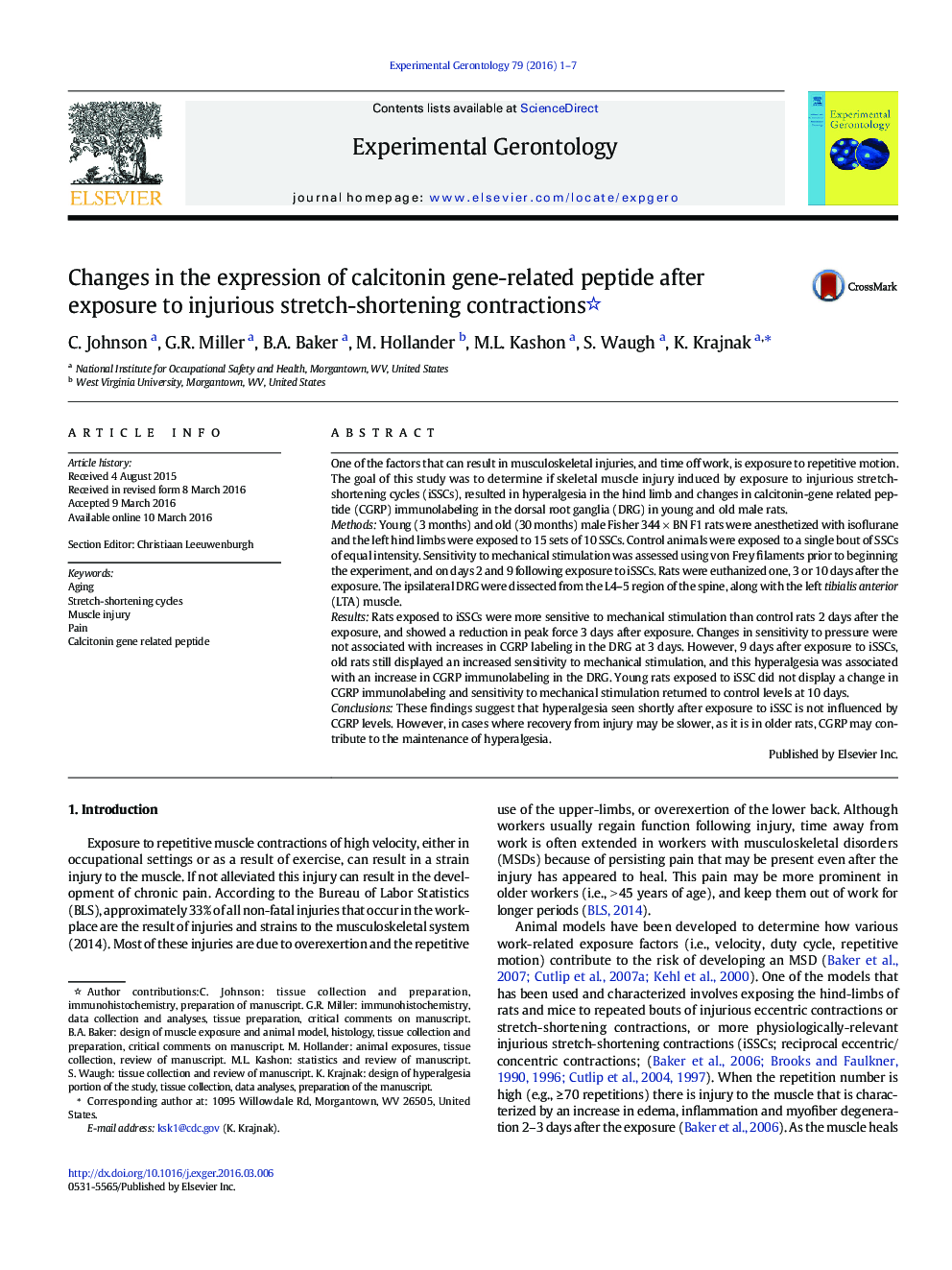| کد مقاله | کد نشریه | سال انتشار | مقاله انگلیسی | نسخه تمام متن |
|---|---|---|---|---|
| 1906124 | 1534862 | 2016 | 7 صفحه PDF | دانلود رایگان |
• Aging results in a reduction in muscle force and extended recovery after injury.
• Injury-inducing contractions result in prolonged hyperalgesia in older rats.
• Cholinergic synapse number at the neuromuscular junction (NMJ) changes with injury.
• Changes in CGRP in the muscle and DRG may contribute to the maintenance of pain.
One of the factors that can result in musculoskeletal injuries, and time off work, is exposure to repetitive motion. The goal of this study was to determine if skeletal muscle injury induced by exposure to injurious stretch-shortening cycles (iSSCs), resulted in hyperalgesia in the hind limb and changes in calcitonin-gene related peptide (CGRP) immunolabeling in the dorsal root ganglia (DRG) in young and old male rats.MethodsYoung (3 months) and old (30 months) male Fisher 344 × BN F1 rats were anesthetized with isoflurane and the left hind limbs were exposed to 15 sets of 10 SSCs. Control animals were exposed to a single bout of SSCs of equal intensity. Sensitivity to mechanical stimulation was assessed using von Frey filaments prior to beginning the experiment, and on days 2 and 9 following exposure to iSSCs. Rats were euthanized one, 3 or 10 days after the exposure. The ipsilateral DRG were dissected from the L4–5 region of the spine, along with the left tibialis anterior (LTA) muscle.ResultsRats exposed to iSSCs were more sensitive to mechanical stimulation than control rats 2 days after the exposure, and showed a reduction in peak force 3 days after exposure. Changes in sensitivity to pressure were not associated with increases in CGRP labeling in the DRG at 3 days. However, 9 days after exposure to iSSCs, old rats still displayed an increased sensitivity to mechanical stimulation, and this hyperalgesia was associated with an increase in CGRP immunolabeling in the DRG. Young rats exposed to iSSC did not display a change in CGRP immunolabeling and sensitivity to mechanical stimulation returned to control levels at 10 days.ConclusionsThese findings suggest that hyperalgesia seen shortly after exposure to iSSC is not influenced by CGRP levels. However, in cases where recovery from injury may be slower, as it is in older rats, CGRP may contribute to the maintenance of hyperalgesia.
Journal: Experimental Gerontology - Volume 79, 15 June 2016, Pages 1–7
